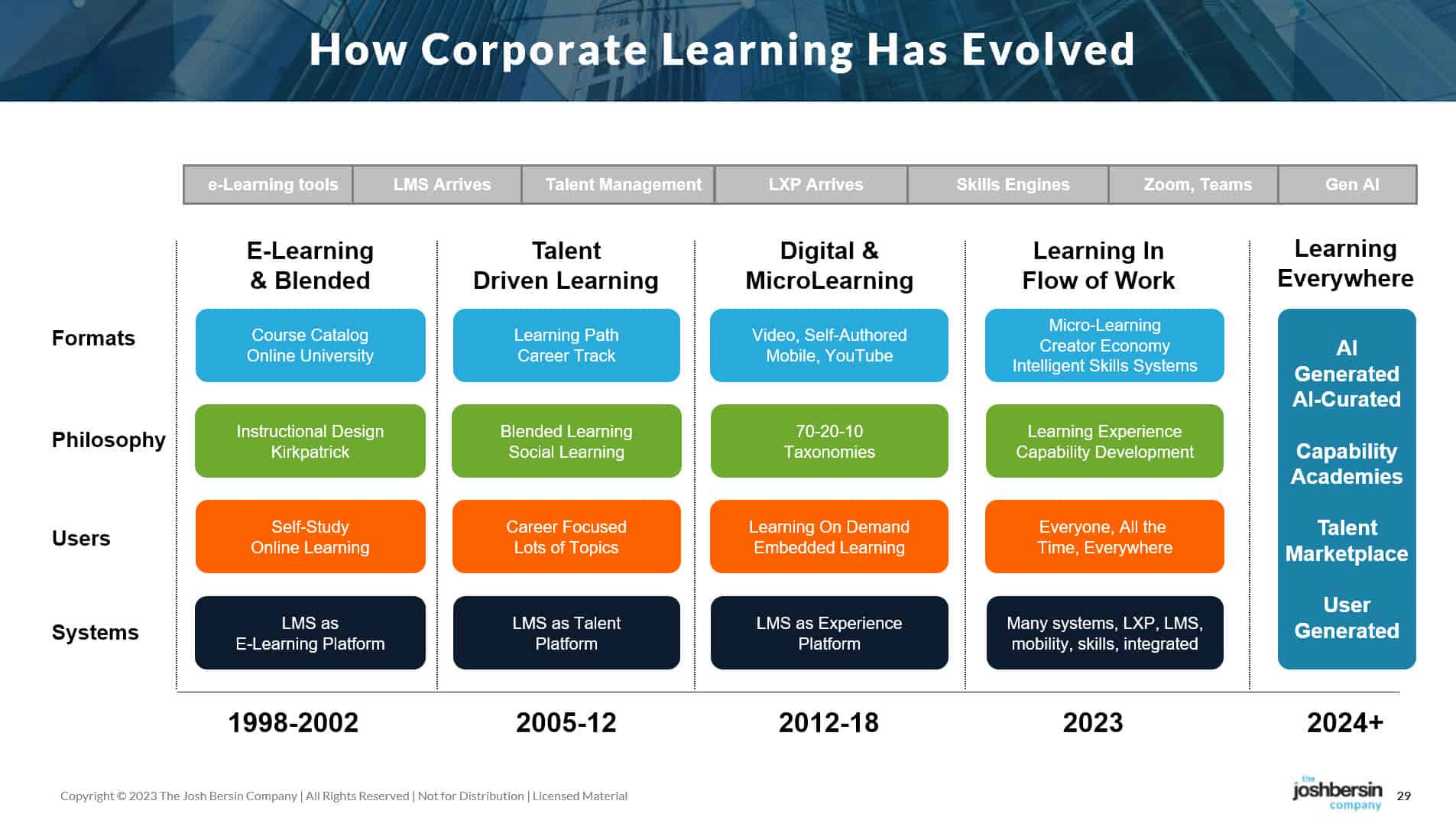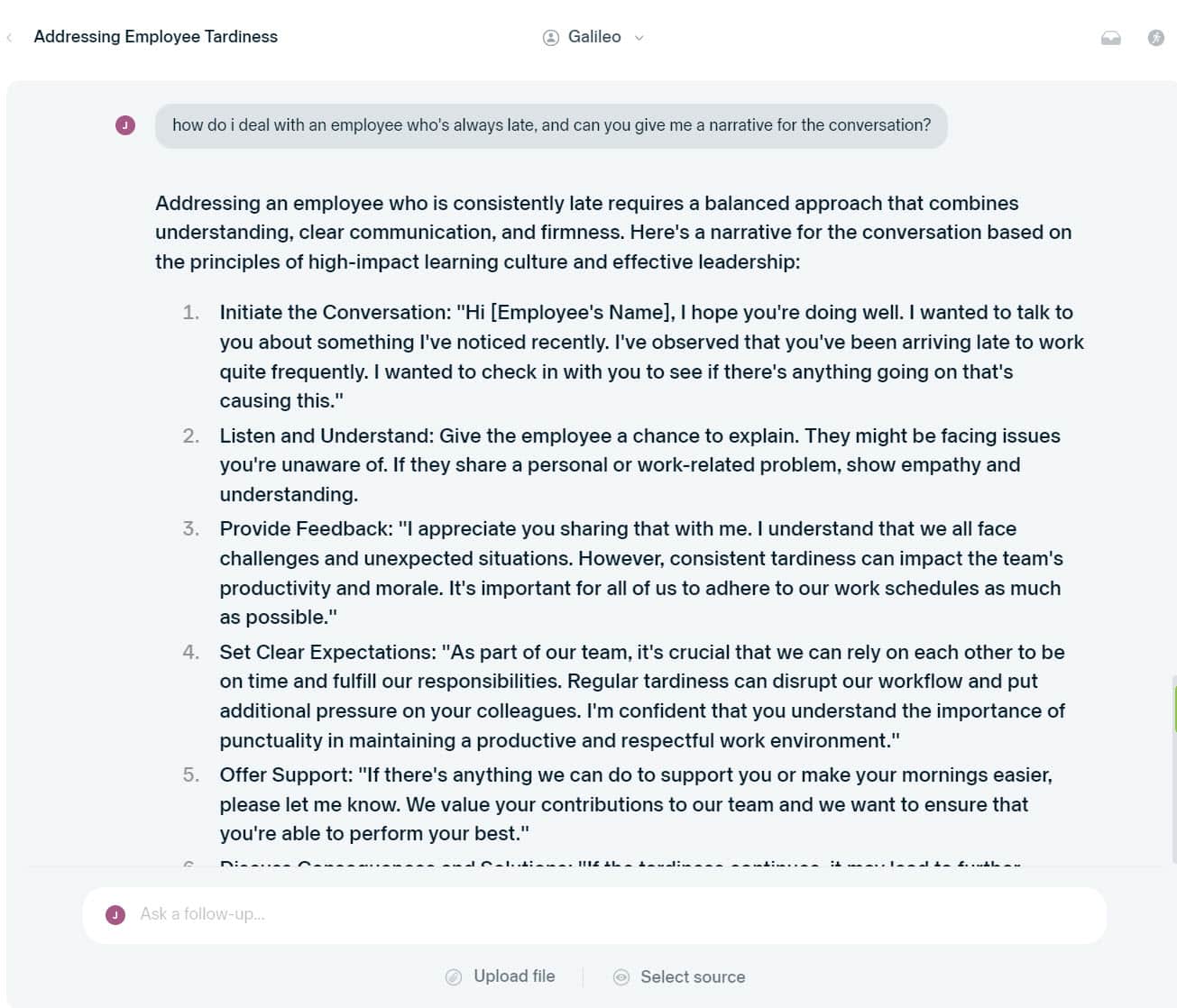AI Is Transforming Corporate Learning Even Faster Than I Expected
Of all the domains to be impacted by AI, perhaps the biggest transformation is taking place in corporate learning. After a year of experimentation, it’s now clear that AI will revolutionize this space.
Let’s discuss what L&D is all about. Corporate training is everywhere, and that’s why it’s a $340 billion market. Everything that happens at work (from onboarding to filling out an expense account to complex operational procedures) somehow requires training. And even during recessions, the corporate spending on L&D remains steady at $1200-1500 per person on average.
Yet as L&D professionals know, the problem is highly complex. There are hundreds of training platforms, tools, content libraries, and approaches. I estimate the L&D technology space at over $14 billion in size, and that doesn’t even include systems like search engines, knowledge management tools, and platforms like Zoom, Teams, and Webex. And over the years we’ve been through many evolutions: e-learning, blended learning, micro-learning, and now learning in the flow of work.
Generative AI is about to change all this forever.
 |
Consider the problem we face. Corporate training is not really about teaching, it’s about creating an environment of learning. Traditional instructional design, which is teacher-led and process-focused, often falls short at work. People learn in many ways, often without a teacher, and they look for reference materials, copy what others are doing, and rely on managers, peers, and experts to help. So traditional instructional design models must be extended to help people learn what they need.
Enter generative AI, a technology that’s designed to synthesize information. Generative AI tools like Galileo™ can understand, consolidate, reorganize, and deliver information from a large corpus in ways that traditional instructional designers could not. This AI-driven approach to learning is not only more efficient but also more effective, enabling learning in the flow of work. And users can ask whatever question they want, with answers relevant to their need.
In the early days learning in the flow of work meant searching for information and hoping to find something relevant. This process was time-consuming and often fruitless. Generative AI, through its magic of neural networking, is now poised to solve these problems, acting as a Swiss Army knife for L&D.
Here’s a simple example. I asked Galileo™, which is powered by 25 years of research and case studies, “How do I deal with an employee who’s always late? And please give me a narrative to help?” Rather than take me to a course on management or show me a bunch of videos, it simply answered the question. This type of interaction is where much of corporate learning is going.
 |
Let me summarize four major use cases for AI in L&D:
Generating Content: AI can dramatically reduce the time and complexity involved in content creation. For instance, Arist, a mobile learning tool, has an AI generation feature Sidekick that can convert comprehensive operational information into a series of instructional activities. This process, which could take weeks or even months, can now be completed in days or even hours.
We use Arist in The Josh Bersin Academy, and our new mobile courses are coming out almost monthly now. Other tools like Sana, Docebo Shape and the user-focused learning platform 360 Learning are just as exciting.
Personalizing the Learner Experience: AI can help tailor learning paths to individual needs, improving upon traditional models that assign learning paths based on job roles. AI can understand the details of content and use that information to personalize the learning experience. This approach is far more effective than the cluttered learning experience platforms (LXPs) that often fail to truly understand the details of the content.
Uplimit, a startup dedicated to building an AI platform to help teach AI, is using its Cobot and other tools to personalize coaching and tips for technical professionals learning about AI. Cornerstone’s new AI fabric recommends courses by skill, Sana’s platform connects tools like Galileo to learning, and the new AI-features in SuccessFactors also give users a curated view of learning based on role and activity.
Identifying and Developing Skills: AI can help identify skills within content and infer the skills of individuals. This aids in delivering the right training and determining its effectiveness. While many companies are working on high-level skills taxonomy strategies, the real value lies in the granular, domain-specific skills that can be identified and developed through AI.
Eightfold, Gloat, and SeekOut, pioneers in talent intelligence, can infer employee skills and immediately recommend learning solutions. We are actually using this technology to introduce our HR Career Navigator, coming early next year.
Replacing Training With Knowledge Tools: Perhaps the most disruptive use case of AI in L&D is the potential to replace certain types of training altogether. AI can create intelligent agents or chatbots that provide information and solve problems, potentially eliminating the need for certain types of training. This approach is not only more efficient but also more effective, as it provides individuals with the information they need when they need it.
Walmart is implementing this today, and our new platform Galileo is helping companies like Mastercard and Rolls Royce find HR information and policy information on-demand without training. LinkedIn Learning is opening up its soft-skills content to Gen AI search and soon enough the Microsoft Copilot will locate training through Viva Learning.
One important “gotcha” here: we are going to have to teach ourselves (and employees) how to “prompt” these systems. I’m sure our AI tools will get smarter and more conversational quickly, but for 2024 we’re going to spend quite a bit of time teaching users how to prompt AI systems to give us the answer we want.
The Potential Here Is Massive
In all my years as an analyst, I’ve never seen a technology with so much potential. AI will revolutionize the L&D landscape, reinventing how we do our work so L&D professionals can spend time consulting with the business.
What should L&D professionals do? Take some time to learn about this technology, or join some of our new AI courses in The Josh Bersin Academy to learn more.
As you get access to tools like Galileo, I know you will be astounded by the opportunities ahead. The future of L&D has arrived, and it’s all powered by AI.
Additional Resources
Certificate Course In the Josh Bersin Academy: HR In The Age of AI
Understanding AI in HR: Deep Dive Research Study
Generative AI: Lots Of Playing Around
The Talent Intelligence Primer
The Post-Industrial Economy: Why And How AI Will Save Us (Josh’s Keynote from Irresistible)


